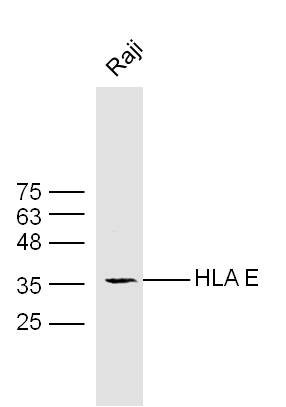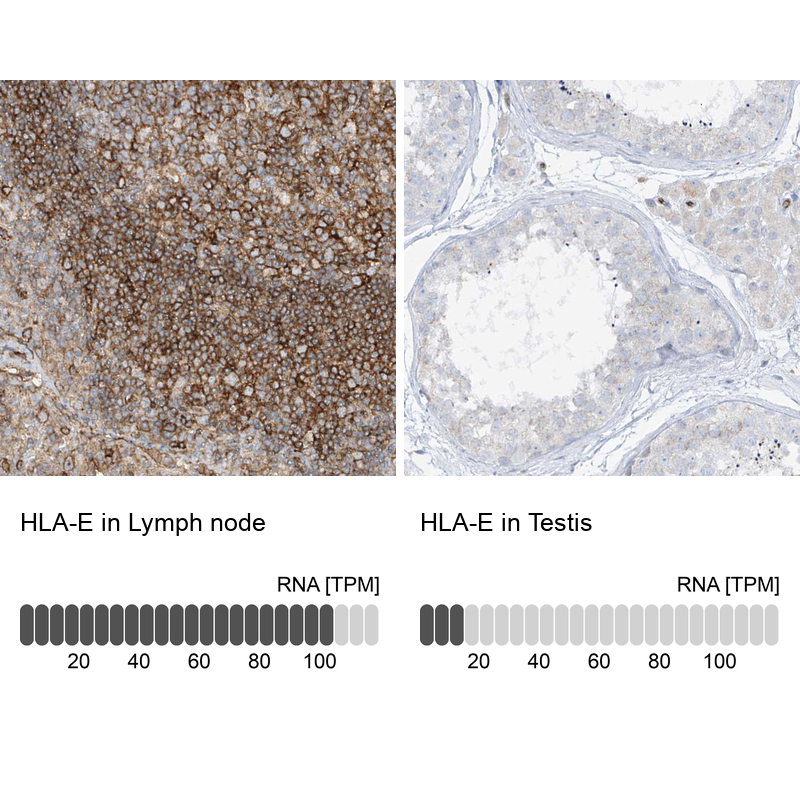HLA-E Antibody
CSB-PA320269LA01HU
ApplicationsELISA
Product group Antibodies
ReactivityHuman
TargetHLA-E
Overview
- SupplierCusabio
- Product NameHLA-E Antibody
- Delivery Days Customer20
- ApplicationsELISA
- CertificationResearch Use Only
- ClonalityPolyclonal
- ConjugateUnconjugated
- Gene ID3133
- Target nameHLA-E
- Target descriptionmajor histocompatibility complex, class I, E
- Target synonymsHLA-6.2, QA1, HLA class I histocompatibility antigen, alpha chain E, MHC class I antigen E, MHC class Ib antigen, non-classical MHC class I antigen, nonclassical MHC class I antigen
- HostRabbit
- IsotypeIgG
- Protein IDP13747
- Protein NameHLA class I histocompatibility antigen, alpha chain E
- Scientific DescriptionNon-classical major histocompatibility class Ib molecule involved in immune self-nonself discrimination. In complex with B2M/beta-2-microglobulin binds nonamer self-peptides derived from the signal sequence of classical MHC class Ia molecules (VL9 peptides) (PubMed:9754572, PubMed:18083576, PubMed:18339401). Peptide-bound HLA-E-B2M heterotrimeric complex primarily functions as a ligand for natural killer (NK) cell inhibitory receptor KLRD1-KLRC1, enabling NK cells to monitor the expression of other MHC class I molecules in healthy cells and to tolerate self (PubMed:9754572, PubMed:9486650, PubMed:17179229, PubMed:18083576). Upon cellular stress, preferentially binds signal sequence-derived peptides from stress-induced chaperones and is no longer recognized by NK cell inhibitory receptor KLRD1-KLRC1, resulting in impaired protection from NK cells (PubMed:12461076). Binds signal sequence-derived peptides from non-classical MHC class Ib HLA-G molecules and acts as a ligand for NK cell activating receptor KLRD1-KLRC2, likely playing a role in the generation and effector functions of adaptive NK cells and in maternal-fetal tolerance during pregnancy (PubMed:9754572, PubMed:30134159). Besides self-peptides, can also bind and present pathogen-derived peptides conformationally similar to VL9 peptides to alpha-beta T cell receptor (TCR) on unconventional CD8+ cytotoxic T cells, ultimately triggering antimicrobial immune response (PubMed:16474394, PubMed:30087334).
- ReactivityHuman
- Storage Instruction-20°C or -80°C
- UNSPSC41116161




